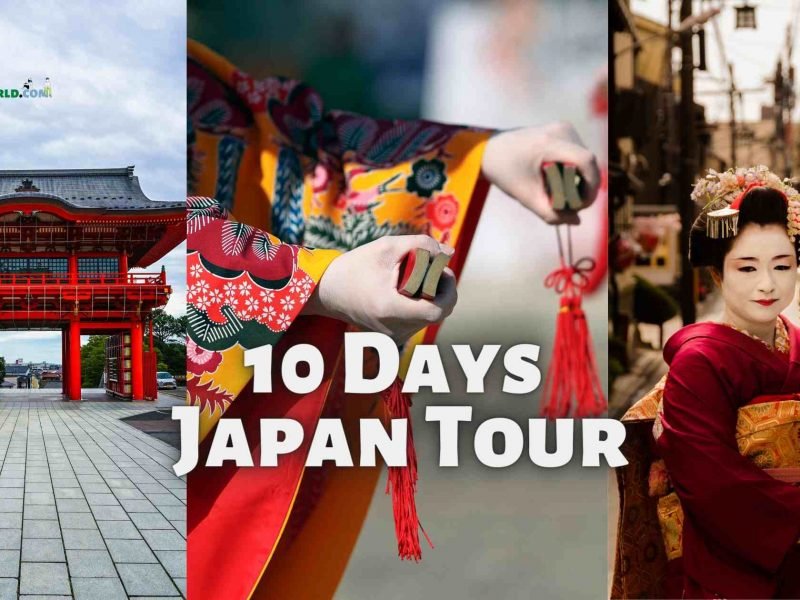About Bullet train routes in Japan
Japan is famous for its high-speed bullet trains, known as Shinkansen. Here is an overview of some of the major bullet train routes in Japan:
- Tokaido Shinkansen: This is the oldest and most heavily traveled bullet train route in Japan. It runs between Tokyo and Shin-Osaka, with stops in major cities such as Yokohama, Nagoya, and Kyoto.
- Tohoku Shinkansen: This route runs from Tokyo to Shin-Aomori in the northern part of Honshu, Japan’s main island. It passes through major cities such as Sendai and Morioka.
- Joetsu Shinkansen: This route connects Tokyo with Niigata, a port city on the west coast of Honshu. It passes through the Japanese Alps and offers scenic views of the countryside.
- Hokuriku Shinkansen: This route runs from Tokyo to Kanazawa, a historic city on the west coast of Honshu. It passes through the Japanese Alps and offers views of the Sea of Japan.
- Kyushu Shinkansen: This route runs from Hakata, a city in southern Japan, to Kagoshima in the south. It passes through major cities such as Kumamoto and offers views of the scenic Kyushu countryside.
- Hokkaido Shinkansen: This is the newest bullet train route in Japan, which opened in 2016. It connects Aomori on the northern tip of Honshu with Hakodate on the southern tip of Hokkaido, Japan’s northernmost island.
These are just a few of the many bullet train routes in Japan. The Shinkansen is known for its punctuality, speed, and comfort, and is a popular way to travel around the country.
History timeline of Bullet train Japan
Here is a brief history timeline of the Bullet Train, also known as the Shinkansen, in Japan:
- 1958: The first Shinkansen line, the Tokaido Shinkansen, opened between Tokyo and Osaka for the 1964 Tokyo Olympics. It was initially called the “New Tokaido Line.”
- 1964: The Tokaido Shinkansen line officially began service on October 1st, just before the start of the Tokyo Olympics.
- 1975: The first expansion of the Shinkansen network occurred with the opening of the Sanyo Shinkansen, which connected Osaka with Fukuoka.
- 1982: The first “mini-Shinkansen” line opened between Yamagata and Fukushima. This line used older, existing tracks and was cheaper to build.
- 1987: The privatization of Japan National Railways (JNR) took place, resulting in the creation of seven private railway companies.
- 1997: The Akita Shinkansen line opened, connecting Tokyo to Akita.
- 2002: The first Shinkansen line to Hokkaido was announced, with construction beginning the following year.
- 2004: The Kyushu Shinkansen line opened, connecting Fukuoka with Kagoshima.
- 2011: The Tohoku Shinkansen line was extended to Shin-Aomori, connecting Tokyo to the northern tip of Honshu.
- 2015: The Hokuriku Shinkansen line opened, connecting Tokyo to Kanazawa.
- 2016: The Hokkaido Shinkansen line opened, connecting Honshu to Hokkaido through the Seikan Tunnel.
Today, the Shinkansen is one of the most advanced high-speed rail systems in the world, with trains reaching speeds of up to 320 km/h (200 mph). The network spans over 2,700 km (1,680 miles) and connects most major cities in Japan.
Important facts on fare of Bullet train in Japan
The cost of a bullet train, or Shinkansen, ticket in Japan varies depending on several factors, including the distance traveled, the class of service, and whether or not you reserve a seat in advance. Here are some general guidelines:
- Base fare: The base fare for a Shinkansen ticket varies depending on the distance traveled. For example, the base fare for a one-way trip on the Tokaido Shinkansen from Tokyo to Kyoto is around 13,080 yen (about $120 USD).
- Class of service: There are two classes of service on most Shinkansen trains: ordinary (coach) and green car (first class). The green car is more spacious and comfortable, and usually costs about 50% more than the ordinary car.
- Reserved vs. non-reserved seating: It is possible to buy a non-reserved ticket for the Shinkansen, which allows you to board any available seat on the train. However, during peak travel times, seats can fill up quickly. To ensure a seat, it’s recommended to reserve a seat in advance, which usually costs a few hundred yen more than a non-reserved ticket.
To give you a rough idea, a one-way Shinkansen ticket from Tokyo to Kyoto in the ordinary car with reserved seating usually costs around 14,000 yen (about $128 USD). However, prices can vary widely depending on the season, time of day, and other factors. It’s a good idea to check the official websites of the railway companies, such as JR East or JR West, for up-to-date fare information and ticket booking.
Statistics of Bullet train in Japan
Here are some statistics on the Bullet Train, or Shinkansen, in Japan:
- The first Shinkansen line, the Tokaido Shinkansen, opened in 1964, just before the Tokyo Olympics. Since then, the Shinkansen network has expanded to over 2,700 km (1,680 miles) of track, connecting most major cities in Japan.
- Shinkansen trains operate at speeds of up to 320 km/h (200 mph), making them one of the fastest high-speed rail systems in the world.
- The maximum operating speed of the Shinkansen has increased over the years. The original Tokaido Shinkansen had a top speed of 210 km/h (130 mph), while the latest N700S series Shinkansen can reach speeds of 360 km/h (224 mph).
- The Shinkansen is known for its punctuality and reliability. According to the Central Japan Railway Company (JR Central), the average delay of the Tokaido Shinkansen in fiscal year 2019 was just 0.6 minutes.
- The Shinkansen is also known for its safety record. There has never been a fatal passenger accident on a Shinkansen train since the first line opened in 1964.
- In fiscal year 2019, over 167 million passengers rode the Shinkansen, according to the Japan Railway Construction, Transport and Technology Agency.
- The Shinkansen has had a significant impact on Japan’s economy and society. By connecting major cities and reducing travel times, it has facilitated business and tourism, as well as helped to reduce traffic congestion and carbon emissions.
Overall, the Shinkansen is a symbol of Japan’s technological innovation and commitment to transportation excellence.
Bullet train Routes that are not covered in the Japan Rail Pass ?
When traveling on most Shinkansen, or Bullet Train, routes in Japan, purchasing a Japan Rail Pass is the most cost-efficient method to do it. Yet, the usage of the pass is subject to a variety of caveats and limitations, which are dependent on the particular route as well as the type of pass being used.
The following is a list of some of the train routes that the Japan Rail Pass does not cover:
The Tokaido Shinkansen, the Sanyo Shinkansen, and the Kyushu Shinkansen all have trains named Nozomi and Mizuho. However, the Japan Rail Pass does not cover travel on these lines, despite the fact that these trains are the quickest and most direct option. Pass holders are permitted to travel on the Hikari and Sakura trains, which travel at a somewhat slower pace and make more stops along the route.
Tohoku and Hokkaido Shinkansen lines are serviced by the Hayabusa, Hayate, and Komachi trains, respectively. These trains are not included in the Japan Rail Pass; however, pass holders are still permitted to travel on the Yamabiko and Nasuno trains, which travel at a little slower pace and make more stops along the route.
The Hokuriku Shinkansen between Kanazawa and Toyama. The Japan Rail Pass does not apply to this segment of the line because it is run by a private railway firm and is therefore not covered by the pass. Passholders are permitted to continue using the JR limited express trains that operate on this route.
Bullet train for Tourists in Japan ?
The Shinkansen, sometimes known as the Bullet Train, is one of the most well-liked ways for visitors to get across Japan. Traveling between large cities and popular tourist spots can be accomplished in a snap with this mode of transportation, which also features frequent departures and comfortable seating.
Getting a Japan Rail Pass before coming in Japan is the most convenient way for travellers to use the Bullet Train while they are there. For a specified amount of time, holders of a Japan Rail Pass are entitled to limitless travel on the majority of JR lines throughout the country, including the Shinkansen (usually 7, 14, or 21 days). This pass can only be obtained by travelers from other countries, and it must be purchased outside of Japan.
With a Japan Rail Pass, tourists can ride on any Shinkansen train, including the faster Nozomi and Mizuho trains (with the exception of the Hokuriku Shinkansen, which runs between Kanazawa and Toyama), making it a cost-effective way to travel throughout the country. There is one exception to this rule, which is the Hokuriku Shinkansen, which runs between Kanazawa and Toyama. The pass also offers complimentary seat reservations, allowing travellers to book a spot on the train of their choice ahead of time at no additional cost.
Even if a tourist does not wish to acquire a Japan Rail Pass, they are still able to ride the Bullet Train by purchasing standard tickets and paying the corresponding fare. On the other hand, this option frequently results in higher costs than utilizing the pass, particularly for excursions of greater duration. It is also crucial to note that passengers who do not possess a JR Pass are unable to ride some of the trains that are the quickest and most direct, such as the Nozomi and the Mizuho trains. Instead, these passengers may be required to take trains that are slightly slower and make more stops.
Which cities of japan are connected with Bullet trains?
The Bullet Train, or Shinkansen, connects many cities in Japan with fast and efficient train service. The main Shinkansen lines and the cities they connect include:
- Tokaido Shinkansen: Tokyo, Yokohama, Nagoya, Kyoto, and Osaka
- Tohoku Shinkansen: Tokyo, Sendai, Morioka, Akita, and Aomori
- Joetsu Shinkansen: Tokyo, Niigata
- Hokuriku Shinkansen: Tokyo, Nagano, Toyama, and Kanazawa
- Kyushu Shinkansen: Fukuoka, Kumamoto, Kagoshima, and Nagasaki
- Hokkaido Shinkansen: Shin-Aomori, Hakodate, and Sapporo
In addition to these main lines, there are also several other Shinkansen lines that connect other cities and regions throughout Japan, including the Yamagata Shinkansen, the Akita Shinkansen, the Kyushu Shinkansen, and the Hokkaido Shinkansen.
Overall, the Shinkansen network covers much of Japan and is a popular and convenient way to travel between major cities and tourist destinations.
Frequently asked Questions about Bullet train in Japan ?
What is the Bullet Train?
How fast does the Bullet Train go in Japan ?
How do I buy a Bullet Train ticket?
How much does a Bullet Train ticket cost?
Can I use my Japan Rail Pass on the Bullet Train?
How do I make a seat reservation on the Bullet Train?
How punctual is the Bullet Train in Japan ?
Can I bring luggage on the Bullet Train?
Are there food and drink options on the Bullet Train?
Which is the Fastest bullet train of Japan ?
The Bullet Train, or Shinkansen, connects many cities in Japan with fast and efficient train service. The main Shinkansen lines and the cities they connect include:
- Tokaido Shinkansen: Tokyo, Yokohama, Nagoya, Kyoto, and Osaka
- Tohoku Shinkansen: Tokyo, Sendai, Morioka, Akita, and Aomori
- Joetsu Shinkansen: Tokyo, Niigata
- Hokuriku Shinkansen: Tokyo, Nagano, Toyama, and Kanazawa
- Kyushu Shinkansen: Fukuoka, Kumamoto, Kagoshima, and Nagasaki
- Hokkaido Shinkansen: Shin-Aomori, Hakodate, and Sapporo
In addition to these main lines, there are also several other Shinkansen lines that connect other cities and regions throughout Japan, including the Yamagata Shinkansen, the Akita Shinkansen, the Kyushu Shinkansen, and the Hokkaido Shinkansen.
Overall, the Shinkansen network covers much of Japan and is a popular and convenient way to travel between major cities and tourist destinations.






Comment (0)